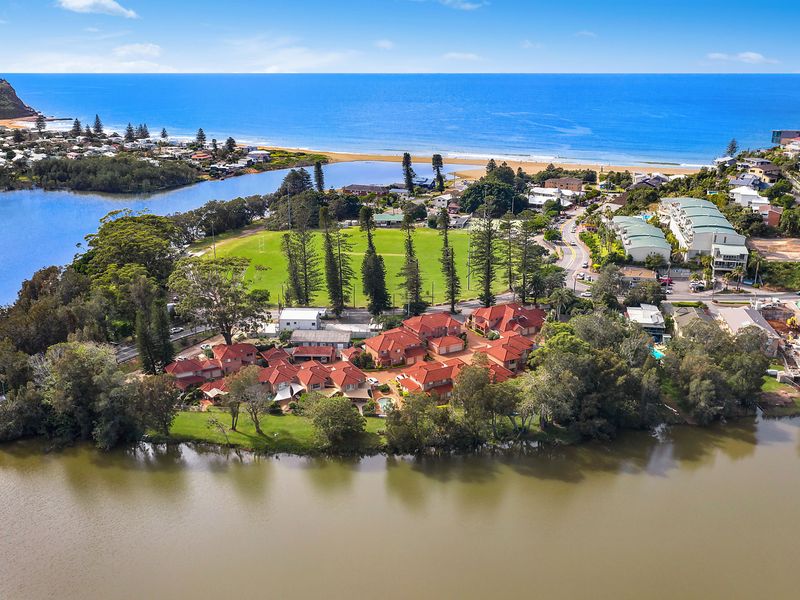Eight regional areas set to boom after COVID-19
Living regionally while still being able to hold down a city job is a long-held dream for many Australians. Serendipitously, the COVID-19 pandemic may allow this dream to become a reality.
Originally published on realestate.com.au
By Cameron Kusher
Executive Manager, Economic Research
29 Apr 2020
For years, businesses have touted workplace flexibility, but the health crisis is the first real test of it with the bulk of Australian workers now exclusively working from home. As a result, businesses are quickly realising that employees don’t have to be in the office every single day in order to be productive.
In a post-COVID-19 world, it’s likely employers will offer greater workplace flexibility to their workers, which could have an impact on demand for housing – not just the type of housing but its location, as people would finally have the freedom to loosen their ties to the office and take up residence in the county.
Space and affordability are key factors
The dream of regional living isn’t the only reason why Australians might look beyond city limits following the pandemic.
While recent Australian Bureau of Statistics data shows 33 per cent of households have an additional bedroom, one spare bedroom for use as a home office might not be enough for couples working from home. This could lead to an uptick in demand for larger, more affordable homes away from the city.

Extra space in the form of a spare bedroom or home office will likely become more popular. Picture: realestate.com.au
We could also see a drop in the number of people who want to live in high-density areas. While there are benefits to inner-city living, being cooped up during these challenging times has the potential to leave some of us longing for more space.
Looking ahead, there is a real possibility that regional property markets could benefit from increased demand in a post-COVID-19 world.
Regions close to capital cities will have the most demand
Despite potential greater workplace flexibility, Australian workers will still be required to be in the office at times post COVID-19.
This means the regional property markets most likely to experience a boost in buyer demand are those relatively close to capital cities with good public transport and road links.
Here are my top eight picks:
1. Blue Mountains, NSW
Although technically still part of Sydney, the region has a median house price of $670,000 compared to $1,000,000 across Greater Sydney.

Katoomba is an area filled with character homes. Picture: realestate.com.au
The commute to Sydney is easily done by car via the Western Motorway or by NSW TrainLink Intercity train.
Townships like Kurrajong, Katoomba and Leura could prove popular.
2. Central Coast, NSW
Again, the region is technically part of Sydney but has a much lower median house price of $663,000.
It’s an easy car commute to Sydney via The Central Coast Highway, and there’s a train from Sydney’s Central Station to Gosford every 20 minutes.
The beachside lifestyle in towns like Avoca Beach and Terrigal is a major drawcard.

The Central Coast is easily commutable from Sydney. Picture: realestate.com.au
3. Ballarat, VIC
Well-connected to Melbourne via the Western Freeway and the V-Line train network, the median house price of $442,750 in Ballarat is significantly lower than the Melbourne median price of $750,000.

Ballarat could be an attractive prospect for buyers who are priced out of Melbourne. Picture: realestate.com.au
Popular suburbs could be Black Hill and Alfredton.
4. Mitchell Shire, VIC
The region sits just to the North of Melbourne and is full of desirable country towns that connect to Melbourne via the Hume Freeway and Northern Highway, as well as V-Line Trains.
The shire-wide median house price is $475,000 and towns like Wallan and Tallarook are within an hour’s commute to Melbourne.

Peaceful Tallarook and Wallan are just an hour’s drive from Melbourne. Picture: realestate.com.au
5. Greater Geelong, VIC
Although prices in this region have risen significantly over recent years, it remains much cheaper than Melbourne with a median house price of $580,000.
Geelong is close to Victoria’s Surf Coast, which makes it an attractive option for people seeking affordable lifestyle property.
Newtown and Geelong West could be popular choices.

Geelong’s prices have risen over the past few years but still remain lower than Melbourne’s. Picture: realestate.com.au
6. Lockyer Valley, QLD
To Brisbane’s West, the Lockyer Valley offers a mix or rural properties and more standard residential homes in some of the larger townships like Gatton and Laidley.
The region is connected to Brisbane via the Warrego Highway and trains from Ipswich, and with a median house price of $347,500, it remains much cheaper than Brisbane’s median price of $535,000.

Regional centres like Laidley are likely to experience growth post-COVID-19. Picture: realestate.com.au
7. Toowoomba, QLD
A little further to the west from the Lockyer Valley is the Toowoomba region, the main centre of the Darling Downs.
With a wide mix of housing and a median house price of $375,000 across suburbs like Rangeville and Mount Lofty, the region remains much more affordable than Greater Brisbane.

Stunning views abound in Mt Lofty. Picture: realestate.com.au
8. Victor Harbor, SA
South of Adelaide and close to the McLaren Vale wine region, this coastal region has a median house price of $390,000, which is much more affordable than Adelaide’s median price of $630,000.
Victor Harbor is one of the biggest towns in the Fleurieu Peninsula region on SA.

Historic Victor Harbour is full of traditional homes. Picture: realestate.com.au





